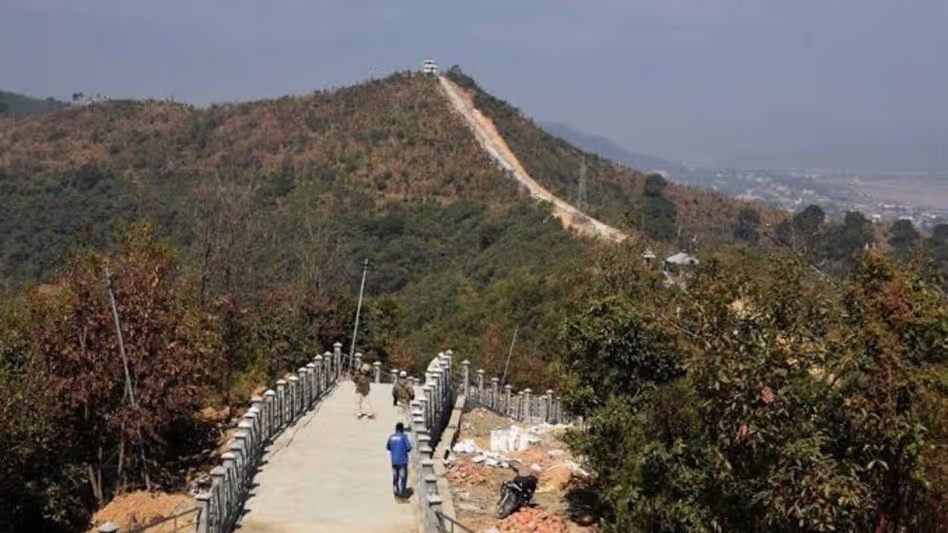Manipur forest department Bans Camping, Trekking and Picnicking in Reserved Forests Without Permission
Summary
The Government of Manipur, through its Forest Department, issued a strict prohibition on camping, trekking, picnicking, expeditions, and gatherings within various Reserved Forest areas such as Langol, Punshilok, Nongmaiching, Heingang and others. The ban, effective from July 29, 2025, stems from the rising number of unauthorised entries triggering forest fires and ecological disruption. Under Section 26 of the Indian Forest Act, 1927, violators may face up to six months’ imprisonment, fines, or both. Any such activities now require prior permission from competent forest authorities to ensure environmental safety ([turn0search3], [turn0search4], [turn0search8]).
Introduction: Why Is Manipur Reining In Outdoor Activities?
Have you ever seen an unwanted spark turn into a raging wildfire? That’s exactly what Manipur is trying to prevent. Dense forests, dry seasons, and rising outdoor recreation in its Reserved Forests—from Langol to Nongmaiching—have raised serious alarms. So, on July 29, 2025, the Forest Department issued a stern order: no camping, trekking, picnicking, expeditions, or group gatherings in these protected zones without prior permission. It’s not a killjoy move—it’s a proactive effort to safeguard fragile ecosystems and protect communities.
What Prompted the Ban? The Forest Fire Trigger
Forest fires are no joke. Especially during dry spells, a careless campfire or a burning cigarette can escalate into uncontrolled blazes. The DFO cited increasing illegal trespasses, unregulated picnics, and unsupervised expeditions as key causes for rising fire incidents. Last dry season saw multiple fires spark in Kanglatongbi–Kangpokpi and Koubru Hill ranges, raising urgent concerns. In fact, similar bans were enforced in early 2023 after a spate of fires threatened wildlife and watersheds ([turn0search16], [turn0search6], [turn0search7]).
Which Forests Are Affected and Why It Matters
The ban doesn’t apply to every patch of greenery—it’s focused on reserved forests like:
- Langol & Langol Extension
- Heingang
- Chingkheiching
- Nongmaiching
- Khema
- Sambei Purum
- Khamenlok Gwaltabi
- Yaingangpokpi
- Laiching
- Punshilok Reserve Forests ([turn0search4], [turn0search8], [turn0search3])
These forests are ecologically sensitive and buffer zones for water catchments. Take Nongmaiching Reserved Forest, nestled near Kangla and Imphal, which also holds sacred value to local communities. Human presence without control can disturb wildlife, erode topsoil, and spark infrared disasters.
What Should Happen Next?
If Manipur genuinely wants ecological balance and social harmony:
- Engage Tribal Chiefs and Gram Sabhas in consultations before finalizing bans.
- Issue clear permit guidelines, detailing cost, process, and permitted zones.
- Run awareness drives in both valley and hill districts about legal access and penalties.
- Create community-led patrols—locals know the forest best, and they benefit from conserving it.
H2: Analogy and Metaphor—Imagine the Forest as a Living City
Think of the forest as a fragile museum—artifacts (trees, wildlife, sacred hills) that must be preserved. Visitors need passes and must follow rules. But if guards bar local patrons who used to help maintain it, preservation becomes exclusion rather than protection.
Conclusion: Safety Without Silencing
Manipur’s ban on camping, trekking, and picnicking in its reserved forests is a timely measure to prevent disasters and safeguard ecosystems. But regulations alone cannot solve deeper issues. When forest protection fails to respect community ties, it becomes alienation disguised as ecology.
The challenge lies in enforcing laws while recognizing indigenous rights and shared heritage. Because forests aren’t just trees—they’re legacies, livelihoods, and shared spaces.
FAQs
- Why did Manipur ban camping and trekking in reserved forests?
The ban addresses rising forest fire incidents and ecological disruption caused by unauthorised activities, backed by Section 26 of the Indian Forest Act. ([turn0search3], [turn0search4]) - Which forests are included under the ban?
Areas such as Langol, Punshilok, Nongmaiching, Heingang, Chingkheiching, Khema, and others are part of the restricted zones. ([turn0search3], [turn0search8]) - Are all activities prohibited indefinitely?
No—prior permission from the Divisional Forest Officer is mandatory. Once granted, regulated activities may be permitted under supervision. ([turn0search7]) - What penalties apply for violators?
Violators face up to six months imprisonment, fines, or both under the Indian Forest Act. ([turn0search4], [turn0search8]) - How are local communities affected?
Traditional forest usages—like gathering wood, grazing or visiting sacred hills—now require permits, complicating access and sparking concerns about cultural and livelihood disruptions. ([turn0search9], [turn0search27])



